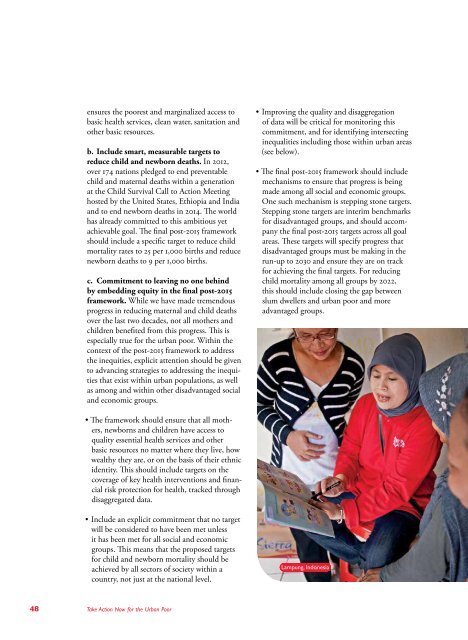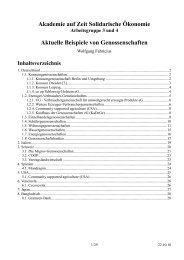sowm_2015__int__africa_full_report_low_res
sowm_2015__int__africa_full_report_low_res
sowm_2015__int__africa_full_report_low_res
You also want an ePaper? Increase the reach of your titles
YUMPU automatically turns print PDFs into web optimized ePapers that Google loves.
ensu<strong>res</strong> the poo<strong>res</strong>t and marginalized access to<br />
basic health services, clean water, sanitation and<br />
other basic <strong>res</strong>ources.<br />
b. Include smart, measurable targets to<br />
reduce child and newborn deaths. In 2012,<br />
over 174 nations pledged to end preventable<br />
child and maternal deaths within a generation<br />
at the Child Survival Call to Action Meeting<br />
hosted by the United States, Ethiopia and India<br />
and to end newborn deaths in 2014. The world<br />
has already committed to this ambitious yet<br />
achievable goal. The final post-<strong>2015</strong> framework<br />
should include a specific target to reduce child<br />
mortality rates to 25 per 1,000 births and reduce<br />
newborn deaths to 9 per 1,000 births.<br />
c. Commitment to leaving no one behind<br />
by embedding equity in the final post-<strong>2015</strong><br />
framework. While we have made tremendous<br />
prog<strong>res</strong>s in reducing maternal and child deaths<br />
over the last two decades, not all mothers and<br />
children benefited from this prog<strong>res</strong>s. This is<br />
especially true for the urban poor. Within the<br />
context of the post-<strong>2015</strong> framework to add<strong>res</strong>s<br />
the inequities, explicit attention should be given<br />
to advancing strategies to add<strong>res</strong>sing the inequities<br />
that exist within urban populations, as well<br />
as among and within other disadvantaged social<br />
and economic groups.<br />
• Improving the quality and disaggregation<br />
of data will be critical for monitoring this<br />
commitment, and for identifying <strong>int</strong>ersecting<br />
inequalities including those within urban areas<br />
(see be<strong>low</strong>).<br />
• The final post-<strong>2015</strong> framework should include<br />
mechanisms to ensure that prog<strong>res</strong>s is being<br />
made among all social and economic groups.<br />
One such mechanism is stepping stone targets.<br />
Stepping stone targets are <strong>int</strong>erim benchmarks<br />
for disadvantaged groups, and should accompany<br />
the final post-<strong>2015</strong> targets across all goal<br />
areas. These targets will specify prog<strong>res</strong>s that<br />
disadvantaged groups must be making in the<br />
run-up to 2030 and ensure they are on track<br />
for achieving the final targets. For reducing<br />
child mortality among all groups by 2022,<br />
this should include closing the gap between<br />
slum dwellers and urban poor and more<br />
advantaged groups.<br />
• The framework should ensure that all mothers,<br />
newborns and children have access to<br />
quality essential health services and other<br />
basic <strong>res</strong>ources no matter where they live, how<br />
wealthy they are, or on the basis of their ethnic<br />
identity. This should include targets on the<br />
coverage of key health <strong>int</strong>erventions and financial<br />
risk protection for health, tracked through<br />
disaggregated data.<br />
• Include an explicit commitment that no target<br />
will be considered to have been met unless<br />
it has been met for all social and economic<br />
groups. This means that the proposed targets<br />
for child and newborn mortality should be<br />
achieved by all sectors of society within a<br />
country, not just at the national level.<br />
Lampung, Indonesia<br />
48 Take Action Now for the Urban Poor




